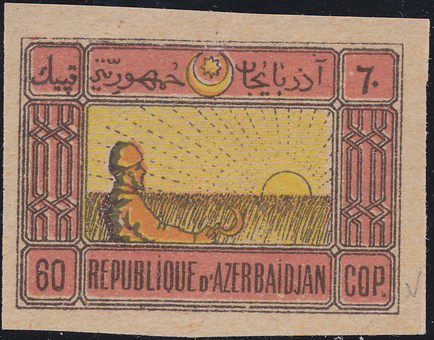After receiving the stamps I did the following:
First I grouped the stamps as Trevor did in three different groups
- Cafe Latte background
- Pale Grey background
- No (visible) background
Than I scanned the "patients" with 1200 dpi saved this. So now we had these stamps:
| Cafe-Latte | |
 | Pale grey |
 | Without1 |
 | Without2 |
After that I darkened the images a bit using Photoshop:
 | Cafe-Latte |
 | Pale grey |
 | Without1 |
 | Without2 |
Now we can clearly see the background on the first three stamps - the background always is spotted - only the last stamp does not have this feature (what seems to be the background is actually the paper - we get to this later)
So far, using an Image Manipulation Program, we learned that the Without1 stamp, which we thought might be without background, has a very weak but noticeable background!
After this I checked the stamps using a Leica MZ FL III Stereo Microscope:
| Cafe-Latte | |
| Pale grey | |
| Without1 | |
| Without2 |
Now we note that even in the "Cafe Latte" version where the background is clearly visible to the naked eye, it almost disappears under the microscope! You now can hardly tell any difference between the "background" of the stamps!
Now I tried to visualize the background with a higher magnification - I used 45x magnification
| Cafe-Latte (clearly visible background) | |
| Pale grey (already hard to tell) |
The stamp "without1" only showed very few and pale background pigments!
After I did all this there was only one stamp which was MOST LIKELY without the background, now I checked with a very
high magnification for any "cafe latte" or "pale grey" pigments.
I looked all over the stamp but could not find
any remains of any pigments used for the background printing - this only can lead us to one conclusion:
The stamp named here "without2" is really printed without the background color!
CLICK HERE
Along with the Armenia stamps, Trevor sent me two examples of Azerbaijan stamps - one with normal yellow background, the other one with apparently missing color yellow.
I basically performed the same steps as illustrated above - The Photoshop step I skipped - well I did not skip it but it did not bring me any useful results ;-)
 | Normal stamp |
 | stamp with "missing" yellow color |
As next step I made some pictures with the Leica MZ FL III
| Normal stamp | |
| stamp with "missing" yellow color |
What first seems to look like yellow pigments on the right stamp are simply some
darker paper fibers - but for sure no yellow pigments!
Here are two more clear examples
| Normal stamp | |
| stamp with "missing" yellow color |
Now as last step I again used a very high magnification (310x) to search for any pigments - first I show you what these pigments look like:
| Normal stamp | |
| stamp with "missing" yellow color |
So, again the only conclusion can be:
The second stamp shown here is for sure without ANY BACKGROUND PRINTING!
For anyone who wants to see the pictures (and some additional ones) in higher quality:
CLICK HERE
In case you are wondering which kind of technical equipment was used, here is a picture:

At the left side you see my "Zeiss Standard 18" with different objective (6,3x - 25x - 40x - 50x - 63x)
That means with my 12,5 ocular you can see the material looked at with 78,75x - 312,5x - 500x - 625x and 787,5x magnification!)
By now I also have a special UV-Unit integrated into the microscope, this also makes it possible to study the ink and structure of the pigments with UV-light.
At the right side you see the "Leica MZ FLIII" a pretty good stereo microscope - which I mostly use for the comparison of overprints and cancels....
No comments:
Post a Comment